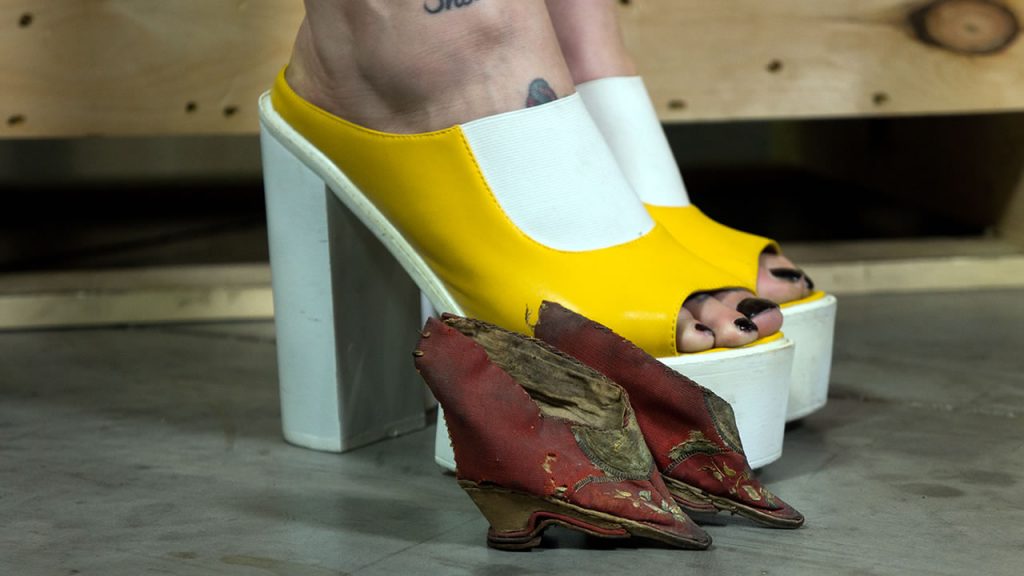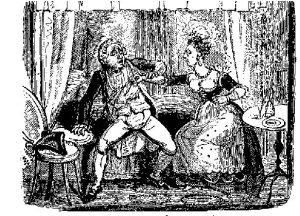Winner of the Fall 2016 StMU History Media Award for
Best Use of Scholarship
Best Article in the Category of “World History”
Best Use of Primary Sources
When I knew I couldn’t suffer another moment of pain and tears fell on my bloody bindings, my mother spoke softly into my ear, encouraging me to go one more hour, one more day, one more week, reminding me of the rewards I would have if I carried on a little longer. In this way, she taught me how to endure—not just the physical trials of footbinding or childbearing, but the more torturous pain of the heart, mind, and soul.1
More often than necessary, women are consumed with the idea of infatuation. Every culture has its own form of standards that pertain to women and what constitutes beauty. Although the world is slightly more accepting now, women used to go to extreme lengths to achieve an image that would be deemed attractive. In the Chinese culture, foot binding was that well-known beauty expectation for centuries. What started off as a celebrity fad, turned into a way of determining social status and eventually an all-around beauty expectation. 2 The objective of foot binding was for women to have the smallest foot possible, starting at very young ages. Not only was this a painful process for girls as young as five years, but it also promoted the idea that women must mutilate their bodies to become appealing to men. At some point in time, women began to just accept that this was something that was supposed to be done in order to be attractive. Often referred to as “lotus boats” or “golden lotuses,” bound feet started as a fad for the famous, and slowly made its way to becoming the social norm.3

This practice began around the tenth century with women in the entertainment business. These women were adored for their tiny arched feet and were seen by men to be much more attractive than middle class women with average feet. As these dancers were gaining an audience, the idea of “lotus feet” was becoming familiar. Not long after these performers expressed their “beauty,” foot binding became a norm for women who wanted to fit in and even for those who had a desire to find a husband.4 This painful process consisted of the breaking of young girl’s toes to form the desired triangular shape. Then the arch of the foot would be bent horizontally from the toes all the way to the heel. As if this was not painful enough, the girls were forced to walk on their feet to intensify the arch, breaking the foot even more. After all of this, the foot would be wrapped to maintain the shape of it as well as prevent any sort of deviation.5

Although this practice was around for centuries, it was only a matter of time before someone realized how inhumane and cruel it really was. Thankfully, many people began to protest against foot binding, forming “anti-foot binding organizations” to raise awareness on the inhumanity of binding women’s feet. By the 1950’s, laws were passed, allowing women to unbind their feet. Although hesitant at first, the trend slowly declined. Many women protested to unbinding their feet, due to the fact that it had been a social norm a thousand years. However, the movement against foot binding continued and eventually the last of the factories that make the tiny shoes were shut down, disabling the women from continuing the custom. Today, foot binding is no longer practiced and the only women who continue to maintain the tiny feet are those elder women who refuse to let go of the past.6
- Lisa See, Snow Flower and the Secret Fan (New York: Random House Publishers, 2005), 3-4. ↵
- Yaodong Gu et al., “Foot Loading Characteristics of Chinese Bound Feet Women: A Comparative Analysis,” PLoS ONE 10, no. 4 (April 2015): 1–9, doi:10.1371/journal.pone.0121695. ↵
- Yu-ning Li, Chinese Women Through Chinese Eyes (New York: Routledge, 2015), 125-127. ↵
- Women in the Middle Ages: An Encyclopedia, 2004, s.v. “Footbinding (Late 10th Century-early 20th Century),” by Patricia Buckley Ebrey. ↵
- Amanda Foreman, “Why Footbinding Persisted in China for a Millennium,” Smithsonian, accessed November 8, 2016, http://www.smithsonianmag.com/history/why-footbinding-persisted-china-millennium-180953971/. ↵
- “Women with Bound Feet in China,” Reshaping the Body: Clothing & Cultural Practice, accessed November 8, 2016, http://exhibits.hsl.virginia.edu/clothes/lady_bound/. ↵



189 comments
Engelbert Madrid
The article just gave me goosebumps while I read and saw the images of the women’s feet. I could not believe Chinese women were taught that smaller feet was a beauty standard for men. The thought of seeing someone foot bind gives me chills, because that is extremely painful as I saw the images of women foot binding. I’m glad foot binding is illegal and not practice in any society.
Miguel Rivera
To think back and believe that this was normal in a culture is pretty surreal. It is something that is very painful but thought to be beautiful by men so it was done. Maybe one day makeup and plastic surgery will not be used anymore and people will look back and think to themselves how odd it was that it was used. Obviously foot binding and makeup are not the same but the point I am trying to get to is that what may seem normal now may not be a social norm in the future. But one thing that is clear is that I am glad to see foot binding is no longer used as a custom, and in my opinion true beauty comes from within.
Megan Copeland
This article was very disturbing to read. The thought of foot binding hurts my feet. I have heard of this before and I thought it was crazy and that no one actually participated in it. It is crazy to think people determined beauty based on how tiny a woman’s feet were. For a whole community to participate in this shocks me, because this just seems to painful. I think the pictures really helped explain the article.
Michael Hinojosa
Foot binding was always a concept I knew of but I didn’t know why women went through with it, even if the answer did seem pretty obvious at first. To know that women did this to feel like they looked attractive but also because they felt they NEEDED to do this is honestly shocking and a little bit horrific as well since the images provided in the article gave a clear picture on what the end result of all this was, and it isn’t pretty to look at.
Emily Jensen
Ouch! As a former ballet dancer, I know foot pain just from being on your toes for hours at a time. I can’t imagine intentionally mutilating your own body in order to conform to social beauty standards, especially to start the mutilation at such a young age. I can see why this article won multiple awards, very well written and easy to follow. A really great read overall!
Madison Downing
I honestly believe that it is so crazy that people find foot binding as something they should put themselves through to seem beautiful. I guess this is how culture shock feels because for the women and men in China at the time thought this to be normal. I wonder the type of pain these women felt while breaking their feet and having to walk on them. I wonder if they still thought it was worth it? I can’t believe not many people wanted to speak out about this and continued to follow the practice despite the pain. I would love to hear all their stories and you wrote a great article!
Sabrina Hsu
I knew what foot binding was but I never knew what other reason they had to do it besides making their feet smaller, which isn’t really a valid reason. It’s crazy that these women thought that they needed to do this in order to look more attractive, and it’s even crazier that men actually found it attractive! I’m so glad that people finally came to their senses and this practice was made illegal. I can only imagine how much pain little girls had to go through and how traumatic it must have been for them, and they didn’t even know what they were being put through was so wrong and so inhumane.
Montserrat Moreno Ramirez
About three years ago, in one of my cultural classes we talked about this issue, but never really went that deep into matter. We all know stereotypes regarding beauty still exist in all countries, but I find it unbelievable that people would reach the point of mutilation in order to fit into a society. I can only imagine the pain that must have been. Just gladly this isn’t a “thing” anymore.
Alyssa Garza
I’ve heard of foot binding before and it really does sound painfully to do especially as a young child. It’s crazy how our different cultures have a different view of beauty. It amazes me how all females will go to different lengths to be beautiful in society views. I wish that society views of beauty didn’t matter that much compared to how we see ourselves as beautiful.
Jocelyn Moreno
I find it horrifying at what lengths women would go to in order to find a suitor. I believe we have our own versions of foot binding but less extreme. For example we have plastic surgery which can be used to alter the way we look or “perfect” it. I found this article very interesting, I love the way you added that only the people who grew up with foot binding are stuck on those ways while everyone else moved on.